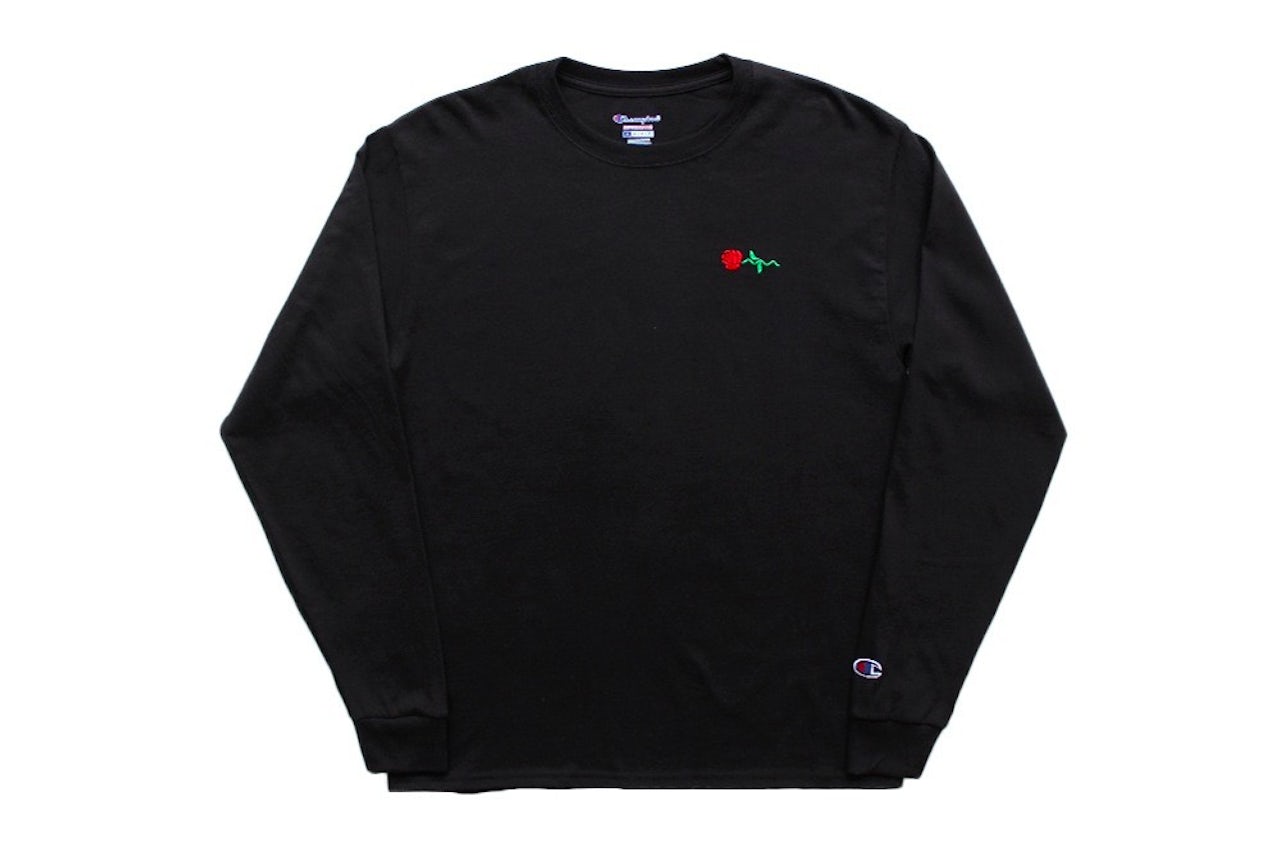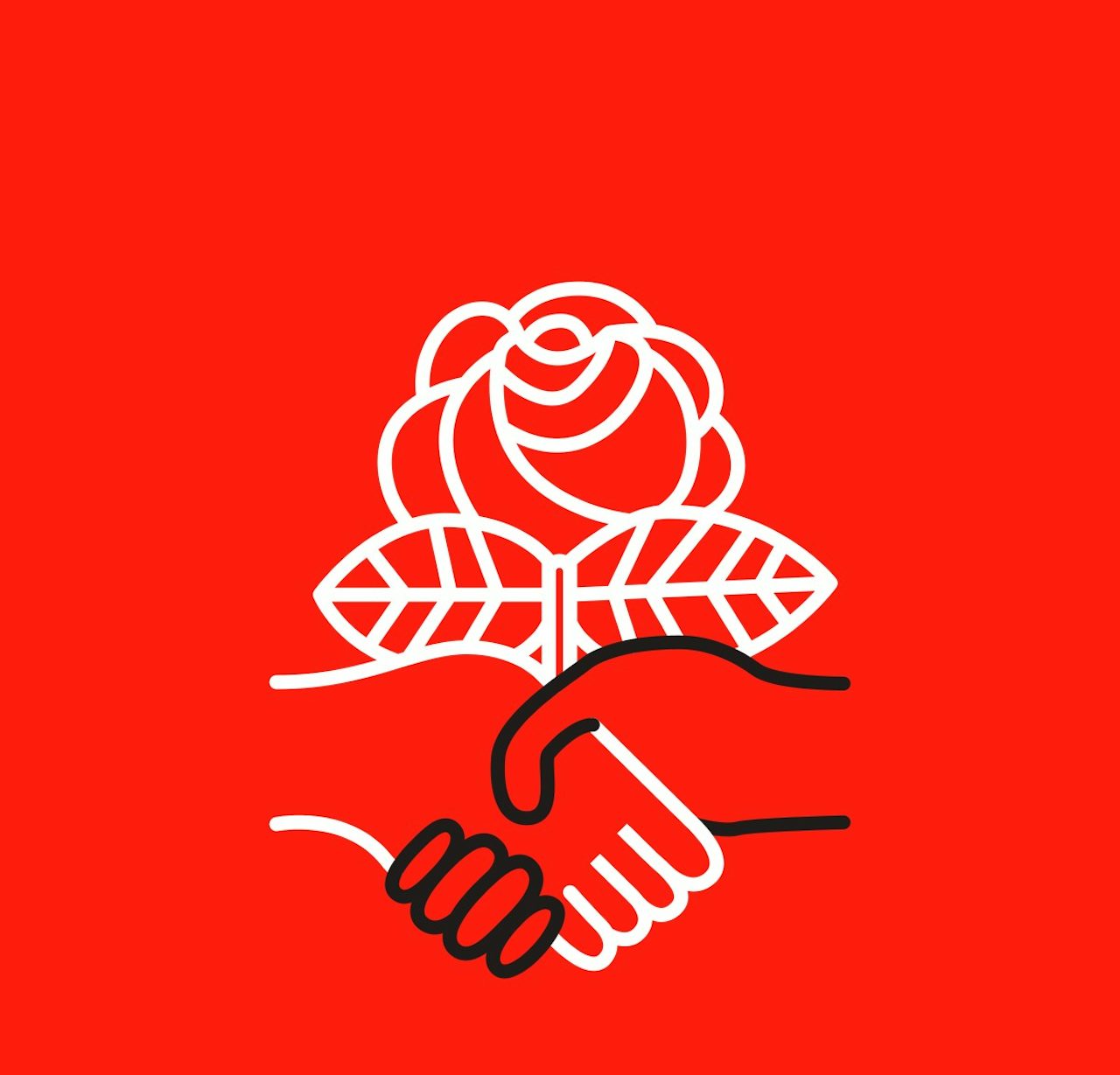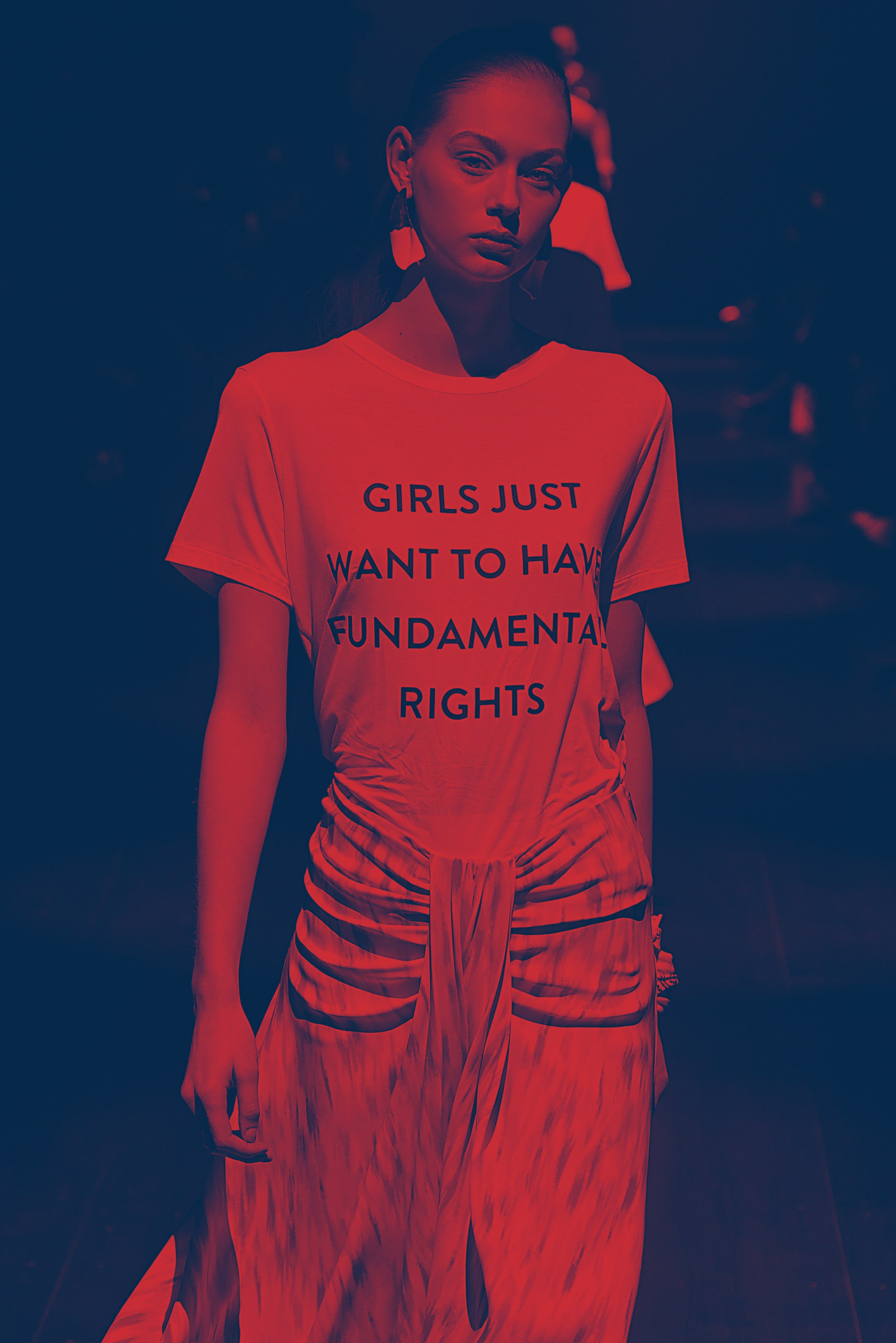The red rose, long a symbol of love, romance, and lust, has emerged as a dominant visual motif in 2017. In the world of fashion, streetwear brands like The Good Company and Stussy have adopted it in recent drops, adorning T-shirts, sweaters, and accessories with the symbol. Skateboarders Na-Kel Smith and Sage El Sesser both used roses to embellish the tongues of their pro skate shoes for Adidas and Converse. (El Sesser’s rose, which is gold, is taken from Depeche Mode’s Violator album cover.) And high-end fashion labels like Gucci and Adam Selman have produced entire collections starring the iconic floral symbol.
The rose, which has been the official flower of the US since 1986, has previously enjoyed a similar popularity in fashion. During the “Bohemian chic” phase of the 1970s, embroidery was common on jeans, shirts, and jackets. And roses were a common choice for embroidery patterns, thanks to their relative simplicity (stitching a rose just requires sewing a series of interlocked circles) and lush, romantic sensibility.
But why does it seem like people are obsessed with roses now? Perhaps because of the same simplicity and utility that propelled them to ubiquity decades ago. In streetwear, a common iteration of the rose is a simple use of the classic neon signs that guard nail salons around the country. The iconography is easy enough to reproduce on a budget. Rose templates are common in standard craft sets, and a wide variety of rose illustrations are available as free, public domain images. The flower has started appearing even among more established brands: Obey, the Urban Outfitters staple, recently released a shirt featuring a familiar print. Elsewhere, roses have popped on accessories like pins and dad hats, released by brands of all sizes and styles.
The designer Adam Selman, inspired by the 1975 book American Denim, included vintage jeans etched with red roses in his latest collection, shown at New York Fashion Week earlier this year. Selman went even further, incorporating filtered rose prints into several dresses and shirts in the collection, too.
Gucci was actually one of the first labels to draw on the floral motif more recently. Creative director Alessandro Michele introduced roses and other floral prints a couple of seasons ago, and arguably helped to make embroidered denim popular again. His work at Gucci since his appointment in 2015 has informed a lot of current trends, and exists as a marker of taste for contemporary style. The label went all-out with the rose imagery in its latest collection, the Gucci Garden Collection, which includes a pair of sneakers and a denim jacket all stitched with roses. As it is refashioned from DIY craft kits to high-end Italian designs, the rose adapts to its surroundings.
If you want to make something pretty, put a rose on it.
As Lynn Yaeger pointed out in Vogue last year, “[There is no reason to] fear the flower, despite the dialectical contradiction these blossoms can embody: They can be at once frumpy and hipster, rule-abiding and rebellious. In this, the rose print is similar to other styles that manage to gleefully subvert their original intentions: army camouflage jackets at antiwar demonstrations, say, or a pair of scruffy sneakers militantly repurposed as evening shoes.” An embroidered rose on a leather jacket has as much a punk flair as it does romance. On something like a skate shoe, the symbol is as sentimental as it is brash, a delicate take on tough thing; skate shoes, of course, are designed to be destroyed.
The rose’s symbolic flexibility has benefited its modern resurgence. It's made a mark beyond fashion, too. In his 2016 solo exhibition I Was Going to Call It Your Name But You Didn’t Let Me, the artist Awol Erizku reinterpreted the iconic neon salon nail sign in a series of paintings. Erizku, who is perhaps best known for having shot the stunning floral photos of Beyoncé’s pregancy announcement, used a hand with immaculately manicured fingertips holding a rose to interject a little social commentary.
“What drew me to the ubiquitous nail salon sign at first was the fact that I never had seen a version with a black hand,” Erizku told The Creators Project. “It’s weird that this motif doesn’t communicate whether the hand is receiving the rose or giving it. The moment the hand is black, considering the racial tension and political climate of our country, it took on a whole new life and meaning.”
Shortly after the end of the first World War, burgeoning socialist movements adopted the red rose as a logo in order to appeal to women. It’s even the symbol for New York University’s Robert F. Wagner Labor Archives, whose website explains: “After World War II the rose became widely adopted as a symbol of the European Socialist and Social Democratic parties. At that time, the Socialist Party’s symbols were considered to be too masculine, and with more women becoming active in the movement, the rose was adopted as a more gender-neutral emblem.” (In the 19th century, suffrage movements used yellow roses to signify their cause.)
Today, the Democratic Socialists of America, a group whose size tripled to 19,000 due-paying members this year (up from roughly 6,000 last year), adopted a logo incorporating a rose: a vector illustration of a red rose with black and white hands interlocked in front of it. The symbolism is a call to the group’s commitment to gender and racial equality, and it’s both effective and aesthetically pleasing. David Duhalde, the deputy director of the Democratic Socialists of America, explained over the phone that the choice was a matter of simplicity. “It only requires a series of circles to make,” he said. “It’s very fashionable, which I think is interesting. I think it connects on a sort of emotional level for people who might not even be associated with DSA.”
Devotees of Donald Trump and the alt-right have used frog emojis to symbolize their allegiance to their cause. For the Democratic Socialists, the rose emoji showed up in supporters’ profile names and avatars around the web, helping the group to gain traction on line. “I remember people discussing internally that we wanted to adopt an emoji,” said Duhalde. “And at first there was a bit of pushback because we were worried we would be associated with the show The Bachelor, but in the end it really worked out for us.”
The rose is an easy enough symbol to replicate, and also one that is malleable to interpretation. And people have taken notice, from fashion designers to labor activists. In style, art, and politics, the rose represents the individual's capacity to be strong and soft, all at once. And, of course, if you want to make something pretty, put a rose on it.






